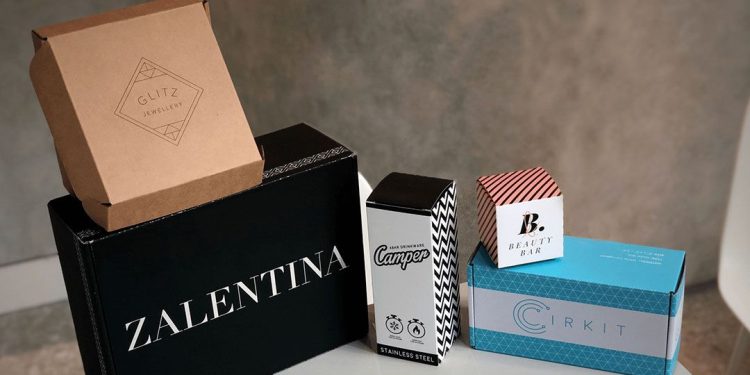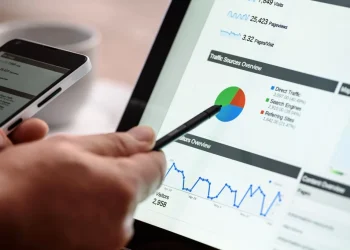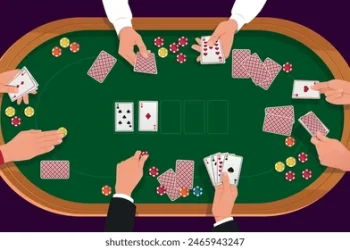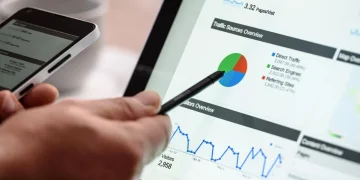The Significance of Obtaining a Box Sample for Your Packaging
Requesting packaging prototypes is essential to the success of your brand and goods.
Even while your package design seems great on paper, it could not live up to your expectations in practice.
Building brand reputation and a devoted clientele requires making sure your packaging meets your expectations as well as those of your clients.
Custom Printed Boxes enhance brand recognition and customer experience by featuring tailored designs, logos, and messaging, transforming packaging into a powerful marketing tool while providing product protection.
To Assess the Fit
Finding the precise proportions for your box might be a little challenging, particularly for items with unusual shapes, unless you submit the item to your supplier for precise measurements.
To confirm the structural design and ensure that the packaging is made to suit your goods securely, obtaining a simple sample would be a great choice.
Ensuring that your product’s packaging fits properly is essential because it reduces the possibility of damage occurring throughout the product’s transportation and distribution phases.
When there is too much gap between your product and its container, it is more likely to get jostled and eventually be destroyed.
Even though this risk may seem little, maintaining your items in their original packaging is essential to fostering customer relationships and improving the image of your company.
Customers are less likely to have favorable opinions of your brand and are more likely to never buy from you again if they get damaged goods.
Include the prototype phase of your package design process to guarantee the highest level of client satisfaction since, when you create bespoke packaging, you are creating an experience for your consumers.
A prototype allows you to evaluate your product’s fit early on and gives you a solid sense of what has to be changed to make it more comfortable.
Additionally, you may ascertain if the structural design complements both your product and brand.
Your box construction or material choices may fall within this category.
Before mass manufacturing your package design, take the time to ascertain what your product requires rather than what you desire, and then make the necessary adjustments to ensure that it leaves a lasting impression on clients.
Customize Boxes transform ordinary packaging into bespoke works of art, precisely crafted to reflect your brand’s essence and elevate product experiences, blending form, function, and unforgettable presentation.
To Assess the Quality
The following factors determine the quality of your packaging:
Output of material printing is completed.
In order to make sure that your packing material can support and endure your supply chain, it is crucial to carefully verify its quality.
Since the printing result is ultimately what will display your branding and convey the quality to clients, it is also crucial to assess it.
Keep in mind that the color gamut used for printing (CMYK) and on the screen (RGB) will provide different output results.
Put another way, you won’t get the same printing quality from your design when it’s printed if you don’t change your artwork from RGB to CMYK in Illustrator.
But changing the color mode of your artwork isn’t the end of the process. Following the specifications for the artwork is one thing, but failing to notice the finer points of the design is quite another.
To find defects that may not be apparent on the screen, many choose to use a production-grade sample or a bespoke digital sample.
You may not get a true sense of the quality if you ask for a digitally printed sample.
It does, however, provide the chance to identify little mistakes in font and artwork design.
Even while everything could seem flawless on screen, even little spelling or punctuation errors can seriously harm the credibility and image of your company.
If customers notice spelling errors, they will be less inclined to trust your brand.
To Determine the Final Details
As was said before, obtaining a sample of the packaging also has the benefit of allowing you to examine the actual package and spot defects that were not apparent in the online proofs.
Additionally, it allows you to talk about any changes, improvements, or adjustments you would like to see made to the finished product.
Even if you may be ignorant to little mistakes as a company, your clients will undoubtedly see them.
The ability to send out sample boxes and your goods to a limited, devoted consumer base for feedback is another fantastic benefit of getting a sample box, or even a few samples.
After all, improving connections and the client experience are the main goals of this package.
You may make any last-minute adjustments based on actual client feedback by using the input you get from your customers.
Regarding the experience of unpacking your items, this provides some piece of mind for your company.
Ration Packaging Boxes are engineered for durability and efficiency, designed to securely store and transport essential food supplies while optimizing space and ensuring long-term preservation in various environments.
Examples of Choices
You may ask your provider for any number of sample alternatives.
To better understand any improvements that need to be made for your finished product, you could wish to choose one or the other, depending on your packaging concerns.
Current Sample
Asking your manufacturer for an existing sample is one of the most popular methods to get a packaging sample.
Usually, these pre-existing samples were created for a prior customer.
You may use the current sample to assess if the material, coating, printing, and thickness are the best choices for your project.
To determine if the stock thickness or structure is appropriate for your goods, you may also test the durability of the packaging by placing your actual product inside.
Existing samples still provide you a very clear idea of how your final package will work, but they are much less expensive than bespoke samples.
You could also get some creative ideas from existing examples that you would want to include in your own design, such as coatings or varnishes.
Personalized Sample
What it sounds like is a bespoke sample.
The precise requirements of your project are followed in the creation of these prototypes.
Whether you wish to proceed with the consignment or not, the bespoke sample is a terrific method to assess the quality of manufacturing and offers you a precise sense of what the product will look like at full production.
Two kinds of personalized samples are available upon request:
Offset printed sample: Production-grade sample (higher cost, longer turnaround time).
Because of the setup expenditures involved in producing a small order of prototypes, production-grade samples might be quite costly.
To get the most accurate depiction of your final design, it is advised that you request a production-grade sample if you want to offset print your finished package design.
In this manner, you can more easily assess the color output and printing quality.
Digital Grade Sample: A digitally printed sample that can be produced more quickly and at a cheaper cost.
To obtain a better sense of how your final package will appear, you may still request a digital grade sample even if you want to offset print it.
Even though digital printing is of poorer quality, it still lets you see any last-minute modifications to the text or artwork before proceeding with offset printing for your finished product.
For a higher-quality end product, keep your ideas short and straightforward if you want to employ digital printing.
Cartons are versatile packaging solutions made from sturdy paperboard, used to efficiently store, transport, and protect a wide range of products, from food items to household goods, while being easily recyclable.
White Standard Sample
Usually used to rapidly verify the material’s quality, standard white samples are simple white boxes devoid of any writing or ornamentation.
Out of the three options, this one is usually the quickest to make and the most economical.
Standard samples are the best option if your project deadline is a little tight and you need to ensure that your material will retain your items adequately.
A quick and easy approach to see how your clients will use your items is to send them a sample of the packaging.
To be honest, it’s the only certain method to guarantee that your clients have the unboxing experience you had in mind.
To guarantee a higher-quality unpacking experience, make sure you assess and adjust your structural design, which is essential to the safety of your items.
With a prototype, you can ensure that the packaging’s physical quality meets project requirements and is precisely what is needed for full production.
















